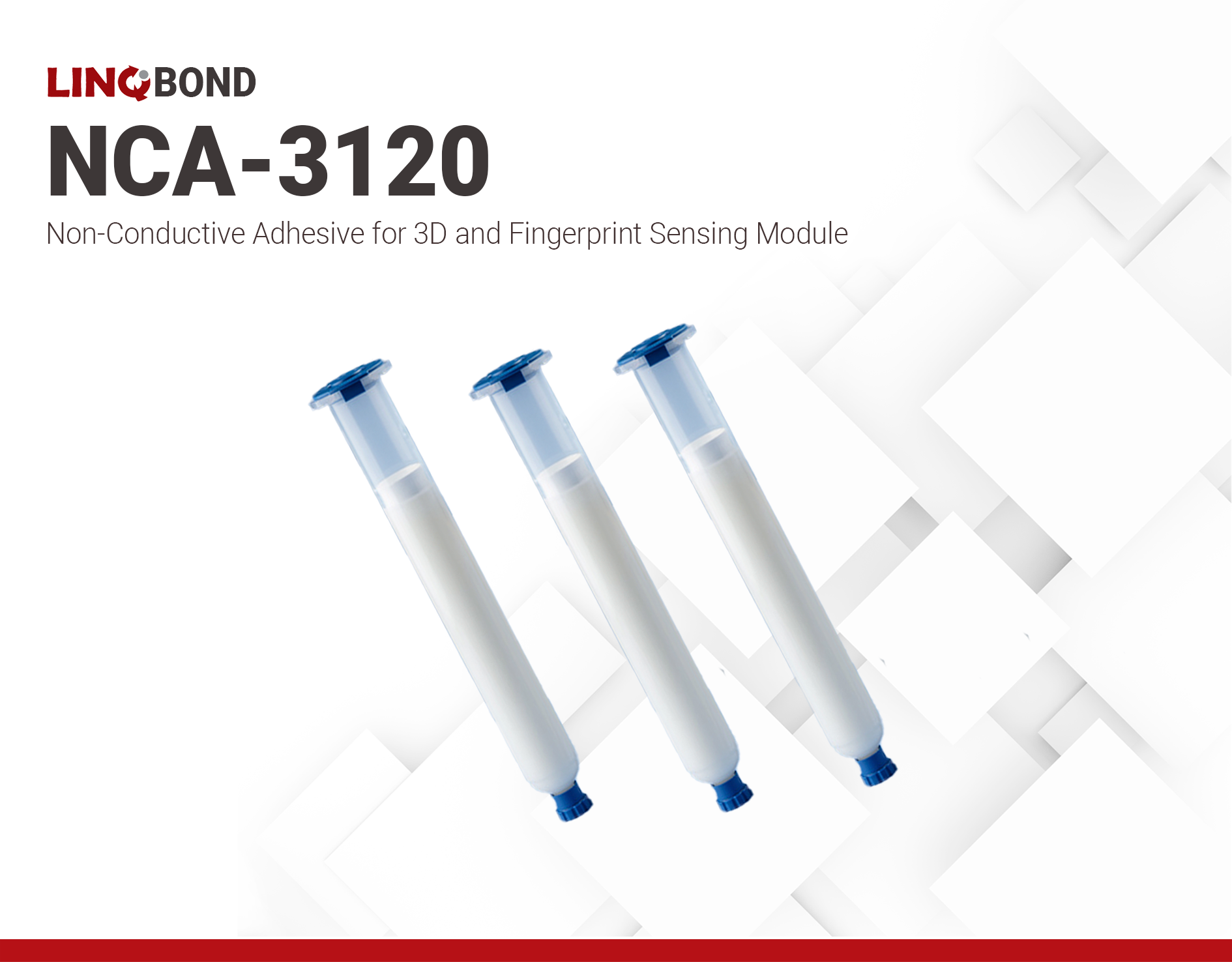LINQBOND NCA-3120 | Non-Conductive Adhesive
- High reliability adhesive
- Fast curing at low temperatures
- Excellent adhesion to plastics, ceramics and metals
Product Description
LINQBOND NCA-3120 is a one-component, modified epoxy adhesive. It is engineered to provide exceptional reliability to meet requirements for high temperature, high humidity, and thermal shock. Its excellent adhesion properties allow for secure bonding and reinforcement to various substrates, such as plastics, metals, glass, and ceramics. This modified epoxy offers fast curing at low temperatures that minimizes thermal stress on components.
LINQBOND NCA-3120 is designed for bonding and reinforcement for electronic and industrial applications such as camera module assembly, LED light lens bonding, electronic components etc. It can also be used for applications where rapid curing is required and in applications with temperature-sensitive components.
Technical Specifications
| General Properties | |||||||
| Work life @25°C Work life @25°C Work life is the amount of time we have to work with a material until it is no longer able to be easily worked and applied on a substrate. It is based on the change in viscosity and it can rely on the application requirements. | 12 hours | ||||||
| |||||||
| Thermal Properties | |||||||
| Glass Transition Temperature (Tg) Glass Transition Temperature (Tg) The glass transition temperature for organic adhesives is a temperature region where the polymers change from glassy and brittle to soft and rubbery. Increasing the temperature further continues the softening process as the viscosity drops too. Temperatures between the glass transition temperature and below the decomposition point of the adhesive are the best region for bonding. The glass-transition temperature Tg of a material characterizes the range of temperatures over which this glass transition occurs. | 30 °C | ||||||
| |||||||
| Mechanical Properties | |||||||
| |||||||
| |||||||
| Chemical Properties | |||||||
| Water Absorption | 0.2 % | ||||||
| Physical Properties | |||||||
| Thixotropic index Thixotropic index Thixotropic Index is a ratio of a material s viscosity at two different speeds in Ambient temperature, generally different by a factor of ten. A thixotropic material s viscosity will decrease as agitation or pressure is increased. It indicates the capability of a material to hold its shape. Mayonnaise is a great example of this. It holds its shape very well, but when a shear stress is applied, the material easily spreads. It helps in choosing a material in accordance to the application, dispense method and viscosity of a material. | 6 | ||||||
| Viscosity Viscosity Viscosity is a measurement of a fluid’s resistance to flow. Viscosity is commonly measured in centiPoise (cP). One cP is defined as the viscosity of water and all other viscosities are derived from this base. MPa is another common unit with a 1:1 conversion to cP. A product like honey would have a much higher viscosity -around 10,000 cPs- compared to water. As a result, honey would flow much slower out of a tipped glass than water would. The viscosity of a material can be decreased with an increase in temperature in order to better suit an application | 22,000 mPa.s | ||||||



